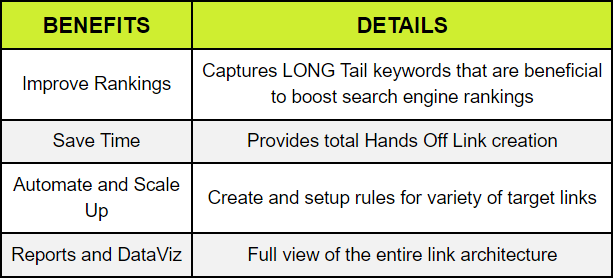Learn the pros and cons of PDF and HTML formats for online content, and how to optimize them for SEO.
Which is better for SEO? ( PDF vs HTML)
PDF and HTML are two common formats for online content, but they have different characteristics, advantages, and disadvantages. Which one is better for SEO? How can you optimize them for search engines and users?
In this article, we will compare PDF and HTML formats, and provide some tips and best practices for SEO.
PDF Format & its Pros & Cons for SEO
PDF stands for Portable Document Format, and it is a file format that preserves the layout, formatting, and appearance of a document, regardless of the device, platform, or software used to view it. PDF files can contain text, images, graphics, links, forms, and other elements. PDF files are often used for printing, archiving, and offline use.
PDF and HTML have different pros and cons for SEO, depending on various factors, such as the type, purpose, and audience of the content, the search engine algorithms, and the user behavior and preferences. Here are some of the main pros and cons of PDF for SEO:
| PDF Pros | PDF Cons |
| Easily indexed and ranked by search engines. | Optimizable for SEO with titles, headings, and keywords. |
| Optimizable for SEO with titles, headings, keywords. | Lack of SEO attributes like individual link attributes, canonical tags, structured data, and social media tags. |
| It is beneficial if containing unique, valuable content. | Limited tracking and analytics capabilities; common trackers don’t work well in PDFs. |
| Can appear in image search results. | Infrequent crawling and updates by search engines; assumed to be static. |
| Accessible with features like bookmarks, tags, etc. | It is beneficial if containing unique, valuable content. |
HTML Format & its Pros & Cons for SEO
HTML stands for HyperText Markup Language, and it is the standard language for creating web pages and web applications. HTML files can contain text, images, links, scripts, styles, and other elements. HTML files are interpreted by web browsers and rendered as web pages. HTML files are often used for online presentation, interaction, and responsiveness.
| HTML Pros | HTML Cons |
| SEO-friendly, optimized for crawling and ranking. | Vulnerable to factors harming SEO, like slow loading speed, broken links, coding errors, security issues, and algorithm changes. |
| Mobile-friendly, adaptable to different devices. | Challenges in maintenance, management, and archiving; require more resources, skills, and expertise. |
| Mobile-friendly, and adaptable to different devices. | Potential for plagiarism, hacking, and manipulation due to easy copying, modification, or deletion. |
How do you optimize PDF and HTML for SEO?
PDF and HTML can be optimized for SEO by following some best practices and tips, such as:
- Choose the right format for your content, depending on the type, purpose, and audience of your content.
- For example, use PDF for content that is meant for printing, archiving, or offline use, such as reports, manuals, or forms. Use HTML for content that is meant for online presentation, interaction, or responsiveness, such as articles, blogs, or landing pages.
- Optimize your content for your target keywords, by using them in your titles, headings, body, meta tags, links, and alt text. Also, use related keywords, synonyms, and variations to avoid keyword stuffing and to improve relevance and diversity.
- Optimize your content for your target audience, by providing useful, valuable, and engaging content that meets their needs, expectations, and preferences. Also, use clear, concise, and compelling language that communicates your message and persuades your audience to take action.
- Optimize your content for search engines, by following the guidelines and standards of the search engines that you want to rank for. Also, use various SEO tools and platforms to monitor, analyze, and improve your SEO performance and results.
Conclusion
PDF and HTML are two different formats for online content, but they have different pros and cons for SEO. PDF files can be indexed and ranked by search engines, but they are not mobile-friendly, lack some SEO attributes, and may not be crawled or updated often. HTML files are inherently SEO-friendly, mobile-friendly, and easy to update, monitor, and analyze, but they can also face more competition and challenges, and require more maintenance and management.
The best format for your content depends on various factors, such as the type, purpose, and audience of your content, the search engine algorithms, and the user behavior and preferences. You should choose the format that suits your content best, and optimize it for SEO by following some best practices and tips. By doing so, you can improve your SEO performance, increase your traffic, and achieve your goals.
FAQs :
Q1. Are PDFs good for SEO?
PDFs are not very good for SEO because they lack some of the metadata and features that search engines use to understand and rank web pages. PDFs are also not mobile-friendly, not easy to track, and not re-crawled often for updates. Web pages are better for SEO than PDFs.
Q2. Is PDF better than HTML?
Generally, the PDF version is more detailed and is often the better option to select. You can then download, print, or email yourself the PDF article for later.
Q3. Can Google index any PDF file?
Generally, we can index textual content (written in any language) from PDF files that use various kinds of character encodings, provided they’re not password-protected or encrypted.
Q4. Why not use PDFs on websites?
Your content needs to be optimized for multiple devices, and this is simply something that PDFs are not built to do. For nearly a decade, over 50% of web traffic has come from mobile phone users. This means that anyone publishing their content in PDF will either annoy or be more likely to lose 50% of their readers.

